Horsepower = Torque(lbs-ft) X Speed(RPM) / 5252(units of measure constant)
The physical size of a motor is mostly determined by the torque capability and less determined by the speed capability.
The Tesla Model S motors are 4-pole motors that appear to reach maximum power at about 5000 RPM (167 Hz). For induction motors, RPM = 120 X Frequency(Hz) / Poles minus about two percent slip. Slip is the difference between the mechanical speed of the motor's rotor and the speed of the magnetic field.
The motor is designed to operate up to about 5000 RPM at constant torque and at constant power (declining torque) up to about 7500 RPM (250 Hz). Above that, both the power and torque decline up to a maximum speed of about 10,000 RPM.
A standard induction motor has aluminum bars to conduct the induced rotor currents. The Tesla motor is said to have a "copper rotor." Copper is a significantly better conductor of electric current than aluminum, so using copper reduces the losses and thus the heat in the rotor. Copper does not have a low reluctance to magnetic fields, and is expensive, so the rotor is presumably mostly iron with copper conductors and/or a copper cladding on the outer surface.
The Tesla motor has special high-quality ceramic bearings.
The Tesla motor has a liquid cooling system.
PS: I won't be surprised if in reality, the RPM and Torque output actually depends completely on the controller (VFD maybe?).
Yes; the controller is a VFD. It completely controls the speed. It limits the torque as required to protect the batteries. The torque capability of the motor must also be considered. However, at some point, allowing the motor to draw more current only provides a little increase in current and risks stalling the motor, so the motor is never operated at its absolute maximum torque capability.

